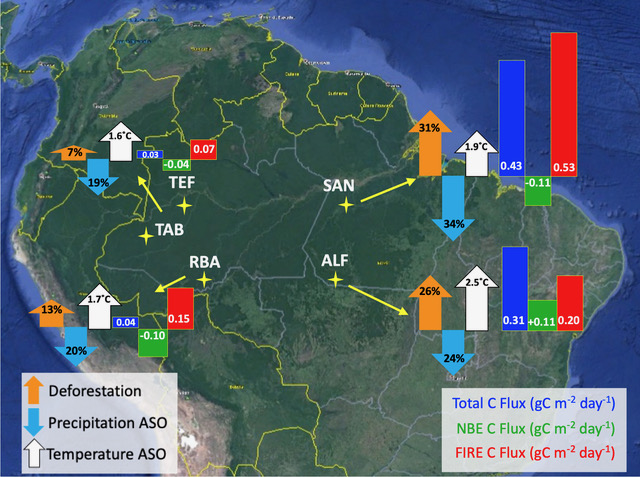The Amazon rainforest is officially creating more greenhouse gases than it is absorbing
The rainforest was a carbon sink. Now, humans have turned it into a carbon factory.

Forests absorb huge amounts of carbon dioxide (CO2) from Earth's atmosphere, making them a key part of mitigating climate change. But humans may have already rendered the world's largest rainforest useless in — and perhaps even detrimental to — the battle against greenhouse gases, a new study finds.
According to the study, published July 14 in the journal Nature, the Amazon rainforest is now emitting more than 1.1 billion tons (1 billion metric tons) of CO2, a greenhouse gas, a year, meaning the forest is officially releasing more carbon into the atmosphere than it is removing.
The carbon balance tipped due to "large-scale human disturbances" in the Amazon ecosystem, the researchers wrote in their study, with wildfires — many deliberately set to clear land for agriculture and industry — responsible for most of the CO2 emissions from the region. These fires also reinforce a feedback loop of warming, the team found, with more greenhouse gases contributing to longer, hotter dry seasons in the Amazon, which lead to more fires and more CO2 pollution.
The eastern Amazon, in particular — which has seen historically greater amounts of deforestation over the past 40 years — has become hotter, drier and more prone to fires than the rest of the rainforest, the researchers found. The result is greater amounts of greenhouse gas emissions from the region and fewer trees to suck up the carbon again through photosynthesis.
"The first very bad news is that forest burning produces around three times more CO2 than the forest absorbs," lead study author Luciana Gatti, a researchers at Brazil's National Institute for Space Research, told The Guardian. "The second bad news is that the places where deforestation is 30% or more show carbon emissions 10 times higher than where deforestation is lower than 20%."
In the new study, the researchers analyzed nearly 600 CO2 measurements from four sites in the Brazilian Amazon, collected with small aircraft from 2010 to 2018. The team found that, on average, fires poured about 1.6 billion tons (1.5 billion metric tons) of CO2 into the atmosphere each year, while healthy trees absorbed only about half a billion tons.
The team also found that, while the eastern Amazon has become a net source of carbon emissions, the western Amazon — which has seen much less deforestation — is neither a carbon source nor a carbon sink. There, CO2 absorption by healthy forests balances the emissions from fires, the team wrote.
Get the world’s most fascinating discoveries delivered straight to your inbox.
The Amazon basin contains about 2.8 million square miles (7.2 million square kilometers) of jungle, representing more than half of the tropical rainforest area remaining on Earth. Limiting deforestation, and especially wildfires, is key to reversing this dangerous trend in the Amazon.
"Imagine if we could prohibit fires in the Amazon — [the forest] could be a carbon sink," Gatti told The Guardian. "But we are doing the opposite — we are accelerating climate change."
Originally published on Live Science.

Brandon is the space / physics editor at Live Science. With more than 20 years of editorial experience, his writing has appeared in The Washington Post, Reader's Digest, CBS.com, the Richard Dawkins Foundation website and other outlets. He holds a bachelor's degree in creative writing from the University of Arizona, with minors in journalism and media arts. His interests include black holes, asteroids and comets, and the search for extraterrestrial life.
 Live Science Plus
Live Science Plus






